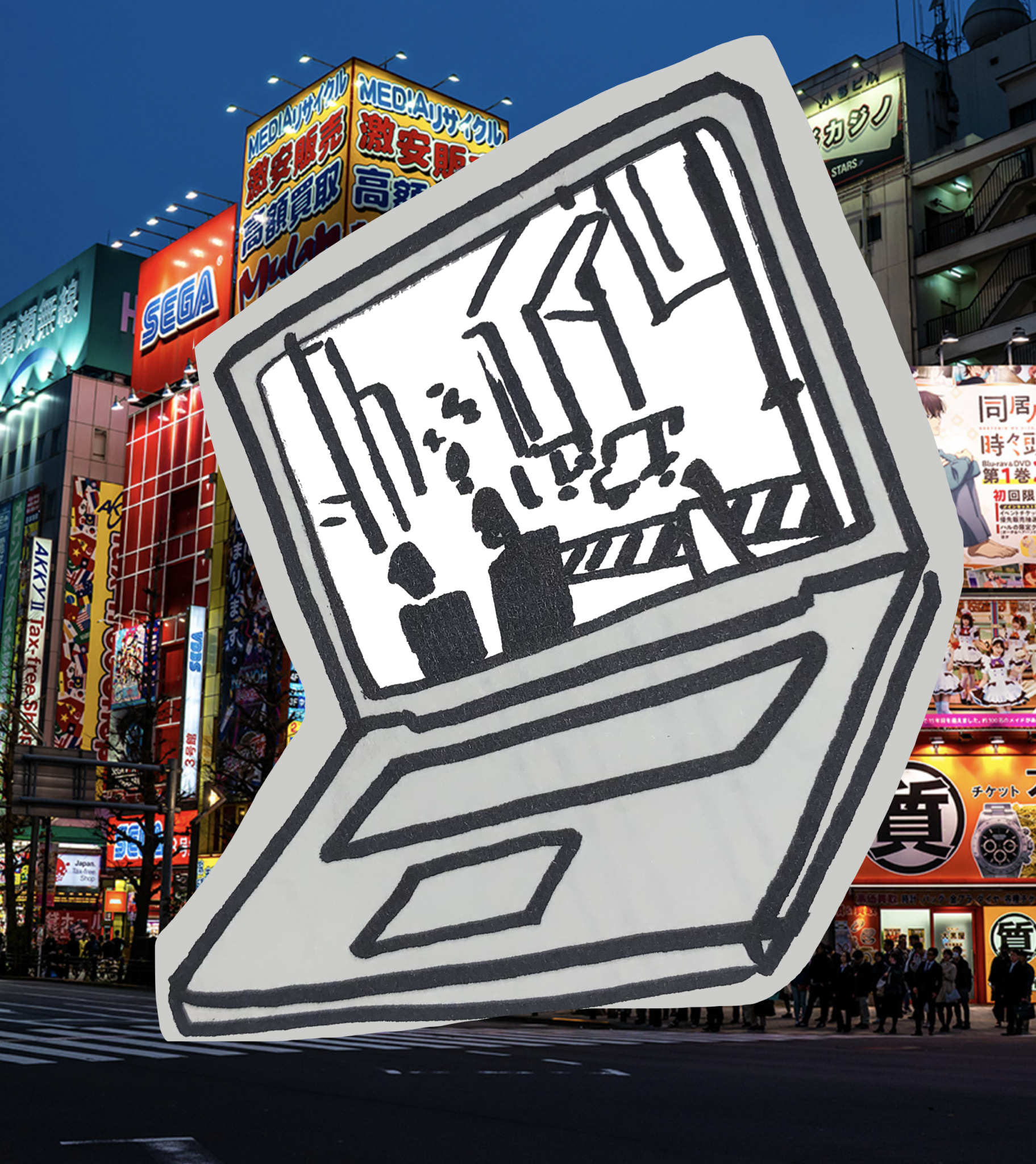
Dora Guo
One night this semester, taking a break from homework, I opened YouTube and scrolled through my feed. One video with over 3 million views, uploaded by some “Rambalac,” was titled “【4K】Walking in Tokyo Shibuya at night of 2017.” Its preview showed a crowded street with colorful lightboxes on the roadside and a massive Forever 21 billboard atop a faraway high-rise. I was intrigued by the high number of views, which seemed to contrast with the straightforward and unoriginal title. I opened the video and expected lackluster footage that would exhaust my interest within 10 minutes.
The video turned out to be exactly what the title advertised: the unedited footage of an evening walk. The walk began under an oak tree, next to the statue of Hachikō, the most famous dog in Japanese history. Tourists circled the tiny bronze dog on the 4-foot tall base, all holding up their phone cameras at the bronze dog that gazed at the crowd. A yellow bouquet withered under the dog’s legs. A lady with long hair posed on the right of the bronze dog for a photo. A dude wearing a light teal T-shirt stared at the camera before looking away… I could envision myself standing behind the lady with the backpack at the bottom of the camera, waiting for my turn to be photographed with Hachikō. The boundary between my reality and the video had blurred, as if I were also in front of the bronze dog holding up a (well, Rambalac’s) camera. Under the setting sun and pink neon lights, flowing with the crowd, Rambalac strolled across the bustling Shibuya Scramble Crossing, walked past a few humble ramen restaurants, and disappeared in the back alley. I finished the video in one sitting, without pausing, without picking up my phone. By the time the video ended, 45 minutes had passed.
The comment section confirmed my experience. Among the 4,575 comments, a lot came from late-night procrastinators who, inexplicably, finished the entire video and yearned for more. When they moved to another one of Rambalac’s night walk videos in Shinjuku, a few of them watched so carefully that they found one girl who appeared three separate times. Another guy even spotted himself.
Of course, our enthusiasm for these night walk videos could simply be credited to wanderlust. But wanderlust isn’t enough to hook us to a plotless video for 45 minutes. This raw footage must possess some irreplaceable quality that even cities themselves cannot offer…
I found myself inexplicably excited whenever Rambalac would make a turn, simply because I could not predict what I was about to see. The Tokyo landscape is discontinuous, isolated by walls and buildings. People’s views are blocked. Even though the city’s physical landscape remains unchanged, the population of the city reshuffles constantly. For city flaneurs, nothing about their walks can be predicted except their final destination. But for viewers of these night walk videos, they don’t even know where the video will end at. Everything is unplanned and unknown. Ironically, the absence of a storyline in these videos generates ample suspense. The city becomes a rabbit hole, full of surprises, waiting to be discovered.
Rambalac dives back into the crowd at Shibuya Scramble. A few salarymen wearing the same white shirts and black pants emerge from behind. One of them is 7-feet tall and has just hung up on a call. A yellow hat sneaks under the camera. One girl sees the camera and waves “Hi.” One guy in the comment section notices the girl and remarks, “She probably didn’t realize she just waved at close to 3 million people.”
The girl acknowledges Rambalac, but does not see the 3 million viewers behind the camera. The same is true for me and the viewers. When we acknowledge the girl and other Tokyoites in the video, we forget how many more people in Tokyo do not appear in Rambalac’s night walk.
Even those who showed up in Rambalac’s video appeared in an incomplete form. We never get to greet the soul under the yellow hat. We never find out how the tall man reacts during the call. Rambalac’s video displays the oxymoronic nature of cities. Though observing the city can show us fragments of strangers’ lives, it also reminds us how much more remains concealed. The fragments alone are already overwhelming in their variety. Yet the real scale of cities’ complexity is beyond our comprehension.
Another comment I saw below the Shibuya video: “I feel lonely just watching this.” But this is a loneliness that we can take comfort in.
The incomplete landscape gives us room for imagination. We can project our own fantasies beyond the border of our visualization.
When we spot someone wearing a T-shirt we like, when we recognize a word on a foreign billboard, when the back alley reminds us of our hometown, we carve out a space for ourselves, despite never participating in the city. We are rewarded with a sense of belonging and solidarity, despite being physically apart.
This commenter captures it: “I don’t understand how my heart aches for something I’ve never experienced before … ” A placeless nostalgia — what ultimately brings 3 million people together.
Tony Hao | tony.hao@yale.edu







